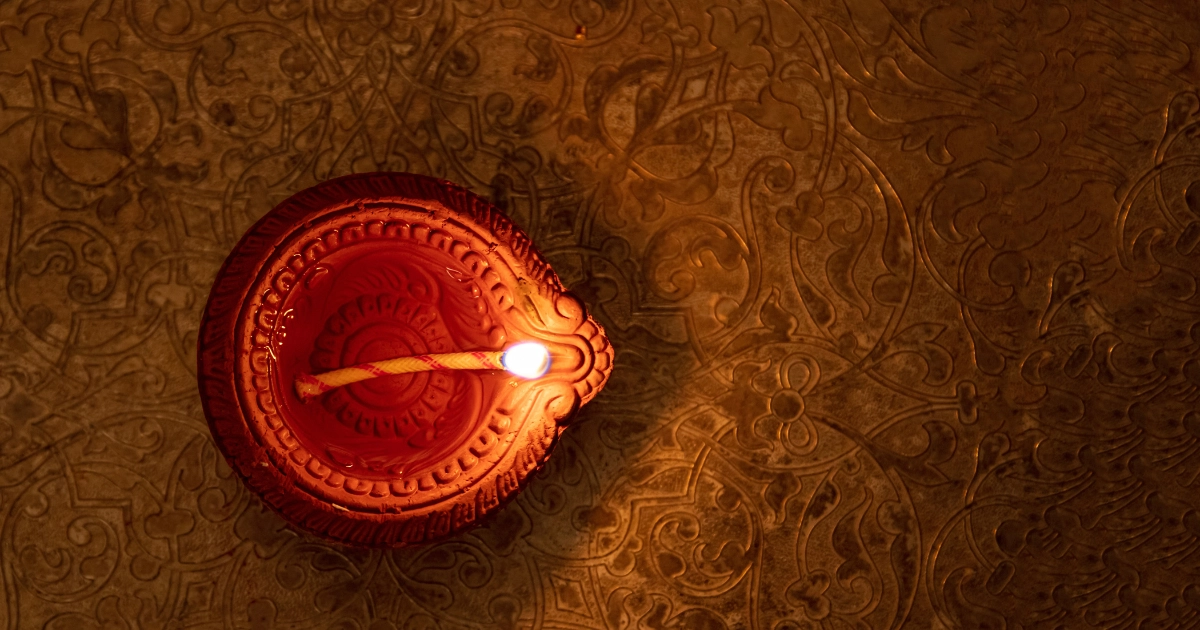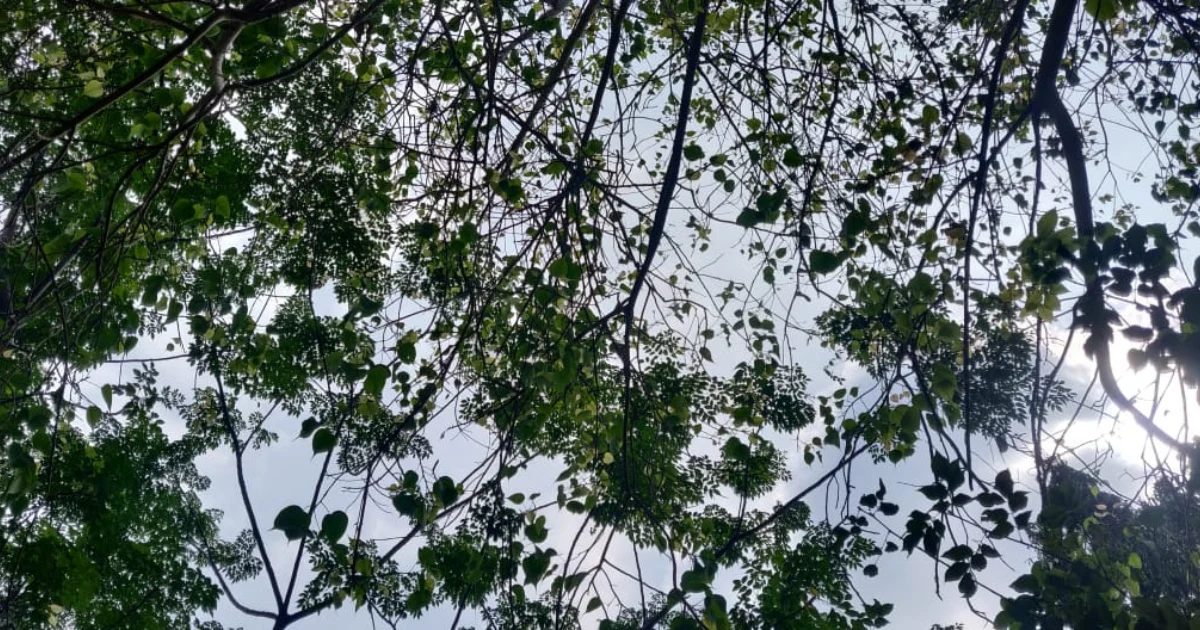I write this piece not as one who knows, but as one who is beginning to learn. For years, my training in anthropology and history taught me to observe with distance, to translate rituals into categories: structure, symbolism, power, and exchange. Yet in Tiruvannamalai, before the hill that breathes fire, those categories seemed to dissolve. What stood before me was not an object of study but a presence, immense and breathing.
I wanted to understand what happens between a deity and a devotee, not as belief or spectacle, but as an experience that rearranges perception itself. Anthropology has often sought to decode the sacred as social text, but in that early dawn, I found that the sacred also reads us. Every gesture, the act of waiting, the rhythm of walking, the murmur of chants, seemed to draw me into a conversation older than language.
This essay is an attempt to inhabit that encounter. It is written in the register of wonder, the kind that refuses to separate myth from matter, ritual from reflection. I do not claim to explain Arunachala. Instead, I have tried to listen to it; to the mountain, to the devotees, to the silences between chants.
In doing so, I am only beginning to understand that devotion, too, can be a way of knowing.
I: Before Dawn
At 4:30 in the morning, Tiruvannamalai was already awake. A crescent moon hung low over the dark outline of Arunachala Hill, its slopes still veiled in shadow. The smell of camphor and woodsmoke drifted through the narrow lanes. I joined the silent procession of pilgrims walking toward the Arunachaleshwarar Temple, each carrying a small bundle of offerings: coconuts, flowers, or a bottle of ghee.
In Tamil lore, Arunachala is not a mountain in the ordinary sense. It is Śiva himself, frozen in stone, a visible liṅga, the eternal column of fire that neither Viṣṇu nor Brahmā could measure. Every rock and contour of the hill is believed to pulse with divine energy. The temple at its foot, sprawling over twenty-five acres, is its beating heart.
As I entered the queue for the darśana, the early hour felt like a borderland between sleep and awakening. Hundreds stood barefoot, shoulders brushing, their voices low but purposeful. Waiting, I realized, was not incidental to devotion. It was part of the ritual architecture of time. Tulasi Srinivas writes that wonder, in its deepest sense, is an ethical and aesthetic condition, a state that suspends ordinary cognition and reorders perception (Srinivas, 2023). The hours of stillness in that queue became a slow schooling in this ethics of attention.
II. The Queue as Pilgrimage
The line moved like a living organism. A woman beside me, her sari faded from years of temple visits, held a brass pot filled with milk for the morning abhiṣeka. “You must see him before sunrise,” she whispered. “That is when the Lord smiles.” Her eyes glistened with a light that seemed older than her body.
To my left, a group of students from Chennai spoke softly about their exams, their voices interspersed with jokes. A mendicant, his hair matted, sat cross-legged by the wall, reciting verses from the Tēvāram. The murmurs fused into a low hum, the collective heartbeat of faith.
Waiting in this human river, I remembered Clifford Geertz’s description of anthropologists as “merchants of astonishment,” tasked with keeping the world off balance through encounters with difference. Yet here, the astonishment was not in the exotic other. It was in the ordinariness of devotion, in the bodies of people who had shaped their days around a god who resided not in abstraction but in the volcanic body of a mountain.
Tulasi Srinivas calls this adbhuta; not simply surprise, but an active cultivation of wonder. The Saṃskṛta aesthetic texts describe adbhuta rasa as the flavor of amazement, the mood that arises when the ordinary becomes extraordinary through encounter. In the queue, the sensation of waiting; of being bound together in patience, became its own ritual. I thought of it as a rehearsal for the vision to come, a slow dilation of the soul’s aperture.
III. Into the Inner Darkness
When the heavy doors of the garbhagṛha opened, a wave of heat and fragrance swept outward. Inside, the world contracted into darkness. The clang of the bell was thunderous, the chant of priests rhythmic and exacting. The crowd pressed forward, barefoot on cold granite.
Before me, the black stone liṅga shone in the lamplight, glistening with layers of oil, milk, sandalwood paste, and ash. The priest poured water over it in steady streams. Smoke coiled upward, merging with the scent of jasmine and burnt camphor. The atmosphere was charged, thick with breath and light.
I had read Rudolf Otto’s account of the mysterium tremendum et fascinans, the paradoxical feeling of terror and attraction before the holy (Otto, 1958). But standing there, I felt something less dual, more intimate. The deity did not seem distant or forbidding. He was immediate, porous, alive. I thought of the Tamil name Annamalaiyar, meaning “Lord of the Unreachable Height.” Yet what I felt was the opposite of distance. The god was here, in the sweat of the crowd, in the sound of the bell, in the trembling of my own hands.
The sight was brief. The priest waved a camphor flame before the deity, illuminating the liṅga in a burst of gold. For a second, I saw everything clearly; the ritual precision, the gleam of oil, the ash-smeared hands, the eyes of others widening in that shared moment of awe. Then the light vanished, and the darkness folded back like water.
IV. The Story of the Fire
Outside, the first rays of sunlight touched the towers of the temple. I sat by a tank where pilgrims bathed, watching their reflections shimmer on the water. A young man offered to tell me the story of the hill, his voice carrying the familiarity of retelling.
Long ago, he began, Viṣṇu and Brahmā argued about who was supreme. To settle their quarrel, Śiva appeared as a pillar of fire, stretching endlessly upward and downward. Viṣṇu took the form of a boar to dig deep into the earth; Brahmā became a swan to fly upward. Neither could find the beginning nor the end. Realizing their limits, they bowed to the light. That flame then cooled into the mountain, so that mortals might see what even the gods could not.
As he spoke, the hill glowed under the rising sun, its contours shimmering in a haze of heat. The story was both cosmology and geography, myth and geology, fused. The divine, here, was not transcendence but materiality itself. To look at the mountain was to look at the residue of the infinite.
This collapsing of the sacred and the natural lies at the heart of Indian religiosity. It is also what Srinivas calls a “decolonial wonder”: a mode of seeing that resists the Western split between reason and devotion, philosophy and ritual. In the West, the experience of wonder has often been linked to discovery, curiosity, and conquest (Daston & Park, 1998). In Tiruvannamalai, wonder is not about mastery. It is about participation, about letting the sacred rearrange one’s sense of the real.
V. The Walk Around God
The next morning, I joined thousands of pilgrims for the Giri Pradakṣina, the circumambulation of Arunachala Hill. The Tamil phrase Girivalam means “to go around the mountain.” The path stretches for about fourteen kilometers, circling through temples, forests, and villages. It is believed that walking this path cleanses the heart of karmic dust.
The hill stayed on my right as I walked. Every few hundred meters, a small shrine appeared, each dedicated to one of Śiva’s elemental forms: fire, air, water, earth, and space. The air smelled of tamarind trees and oil lamps. Children sold sweet rice wrapped in leaves. Stray dogs moved alongside the crowd, as if keeping the same rhythm.
Folklore says that on full-moon nights, the gods themselves join the pilgrims, walking invisibly beside them. I asked an old man what he thought of this story. He smiled. “When you walk with faith,” he said, “the gods do not need to appear. You become their company.”
As I continued, I realized that the act of walking was itself a theology. Each step traced a circle around the divine body, re-inscribing the bond between humans and the sacred earth. The mountain was no longer an object to be seen but a subject to be felt. The rhythm of my feet, the pounding of my heart, the dust rising from the road; all became a single motion.
In anthropology, this would be described as an “embodied cosmology,” where the body becomes an instrument of knowing. But the devotees I met would call it anubhava, direct experience. To walk was to know. To know was to love.
VI. Devotion as Wonder
By the time I completed the circuit, my legs were aching, my throat went dry, yet I felt a quiet elation.
Srinivas argues that in Indian traditions, wonder is not a fleeting astonishment but a sustained mode of attention, cultivated through devotion, repetition, and ritual. It is ethical because it requires humility. It is aesthetic because it transforms perception. To stand in line, to watch the deity, to walk the mountain; these are not separate acts but interlocking practices that produce what she calls “ontological destabilization,” a reordering of what it means to be human in relation to the divine (Srinivas, 2018; 2023).
I thought of the difference between the Wunderkammern of Europe, those cabinets of curiosity that turned the world into spectacle, and the sacred geography of Tiruvannamalai. In one, wonder is an act of possession; in the other, it is an act of surrender. Devotion, in this sense, is not the opposite of inquiry. It is a form of knowledge that begins where the intellect falters.
VII. Conversations by Lamplight
Later, over tea at a roadside stall, I spoke with a group of pilgrims who had walked the circuit more than a hundred times. One of them, a weaver from Coastal Andhra, said he came every full moon for thirty years. “Each time, the mountain looks different,” he said. “Some nights it is gold, some nights blue. But the feeling is the same. You cannot tell if you are walking around the mountain or if the mountain is walking around you.”
His words recalled the philosopher Mary-Jane Rubenstein’s idea that wonder opens us to vulnerability and joy, allowing us to see the world as different from what we thought it was (Rubenstein, 2008). For these pilgrims, that difference is not abstract. It is lived, walked, breathed. Their wonder is continuous, renewable, an everyday resistance to disenchantment.
VIII. The Hill as Teacher
Before leaving, I climbed partway up the hill to the Skandashram, where Sri Ramana Maharshi meditated for years. The ashram was quiet, its stone benches cool to the touch. From there, the view of the temple town was vast: rooftops, smoke, and the unending flow of pilgrims. Ramana once said, “To think of Arunachala is to be drawn to it.” Looking at the town below, I understood that this was not a metaphor. The mountain exerts a gravitational pull on the soul.
As the wind moved through the trees, I remembered Srinivas’s observation that wonder reopens the world to multiplicity and generosity. In the flickering light of that afternoon, I saw the pilgrims not as seekers of miracle but as practitioners of wonder, each step an ethical act, each chant a minor cosmology. The divine here was not beyond but within.
IX. The Afterlight
The next day, as I prepared myself to leave the city, I saw the hill receding into the haze, but its outline lingered like an afterimage. I realized that what I had encountered was not just a religious experience but a lesson in perception. Wonder, I saw, is not a moment of astonishment but a method of seeing; one that demands patience, surrender, and reciprocity.
To walk around the hill was to walk within a cosmology where the sacred and the material, the mythic and the everyday, coexist without contradiction. To have darśana was to learn that sight itself can be a form of devotion. And to leave was to understand that the hill does not end; it continues to live in memory, an ember of the infinite.
References
- Daston, Lorraine, and Katharine Park. Wonder and the Order of Nature, 1150–1750. New York: Zone Books, 1998.
- Otto, Rudolf. The Idea of the Holy: An Inquiry into the Non-Rational Factor in the Idea of the Divine. New York: Oxford University Press, 1958.
- Pieper, Josef. Leisure, the Basis of Culture. New York: Mentor Omega, 1963.
- Rubenstein, Mary-Jane. Strange Wonder: The Closure of Metaphysics and the Opening of Awe. New York: Columbia University Press, 2008.
- Srinivas, Tulasi. The Cow in the Elevator: An Anthropology of Wonder. Durham: Duke University Press, 2018.
- Srinivas, Tulasi. Wonder in South Asia: Histories, Aesthetics, Ethics. Albany: State University of New York Press, 2023.
- Mignolo, Walter, and Catherine Walsh. On Decoloniality: Concepts, Analytics, Praxis. Durham: Duke University Press, 2018.







